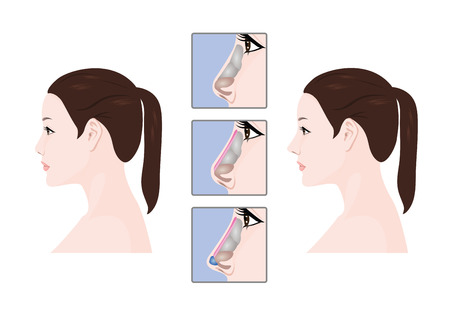Understanding Hyperpigmentation in South Asian Skin
Hyperpigmentation is a prevalent concern among individuals of South Asian descent, particularly within the UK’s diverse multicultural society. South Asian skin, often classified as Fitzpatrick skin types IV to VI, possesses unique characteristics such as higher melanin content and increased susceptibility to pigmentation disorders. These distinctive traits mean that hyperpigmentation can manifest more prominently and persistently compared to lighter skin tones. In the UK context, common causes of hyperpigmentation in South Asian communities include post-inflammatory hyperpigmentation (PIH), melasma, sun exposure—even on overcast days—and hormonal fluctuations. Additionally, cultural practices and environmental factors specific to the UK, such as variable UV intensity and differing skincare routines, can further influence pigmentation issues. Recognising these complexities is crucial; generic treatments may not address underlying causes effectively or could even exacerbate the problem. Therefore, tailored approaches that consider both the genetic and environmental context of South Asian skin in the UK are essential for achieving optimal outcomes in managing hyperpigmentation.
2. Cultural and Environmental Factors in the UK
When considering hyperpigmentation in South Asian skin within the UK, it is essential to recognise how unique environmental and cultural factors interplay to influence both the development and management of this condition. The British climate, urban lifestyle, and culturally specific skincare practices collectively create a distinct context that shapes both risk factors and effective strategies for addressing hyperpigmentation.
UK Climate: Low Sunlight, High Variability
The UK’s temperate maritime climate is characterised by frequent cloud cover, lower levels of UV exposure compared to tropical regions, and significant seasonal variation. While reduced UV intensity can lower overall sun-induced pigmentation risks, intermittent sunny periods often lead to sporadic but intense sun exposure. For individuals with melanin-rich South Asian skin, this irregular pattern can contribute to uneven pigmentation, particularly as the skin may not have developed regular adaptive responses to high UV levels.
Urban Lifestyle Considerations
Many South Asians in the UK reside in densely populated urban centres such as London, Birmingham, or Manchester. Urban living introduces additional environmental stressors, including air pollution and blue light from digital screens, both of which are emerging contributors to oxidative stress and subsequent pigmentation disorders. Furthermore, the ‘indoor lifestyle’ prevalent in many British cities may result in inconsistent use of sun protection—often reserved only for sunny days—thus leaving skin vulnerable during unexpected UV exposure.
| Factor | Potential Impact on Hyperpigmentation | UK-Specific Considerations |
|---|---|---|
| Climate (UV Levels) | Irregular sun exposure triggers pigmentation unpredictably | Sporadic sun protection habits; lack of daily SPF use |
| Air Pollution | Increases oxidative stress and inflammation | Higher levels in urban areas; exacerbates dark spots |
| Cultural Practices | Influence choice of skincare routines and products | Preference for natural remedies; variable adoption of clinical treatments |
| Diet & Lifestyle | Affects skin health and healing capacity | Diverse dietary patterns; possible nutritional gaps impacting skin resilience |
Cultural Norms and Skincare Habits in South Asian Communities
Cultural attitudes towards beauty, skin tone, and skincare profoundly shape approaches to managing hyperpigmentation among South Asians in the UK. Traditional remedies such as turmeric masks or sandalwood pastes remain popular but may not always offer clinically validated results or safety profiles suitable for sensitive or already-compromised skin. There is also a tendency towards underutilisation of prescription-grade topical treatments due to concerns about side effects or unfamiliarity with Western dermatological protocols. This blend of traditional beliefs and modern influences requires tailored educational outreach from practitioners to ensure safe, evidence-based care without disregarding cultural preferences.

3. Evidence-Based Treatments and Products
When addressing hyperpigmentation in South Asian skin within the UK context, it is crucial to select treatments that are both evidence-based and tailored for deeper skin tones. South Asian skin, often classified as Fitzpatrick types IV-VI, is more susceptible to post-inflammatory hyperpigmentation (PIH) and melasma, requiring careful product and procedure selection to minimise risks such as irritation or further pigmentation.
Topical Agents Backed by Research
Clinically proven topical agents remain the first-line approach for treating hyperpigmentation. Ingredients such as hydroquinone (available via prescription in the UK), azelaic acid, kojic acid, niacinamide, and retinoids have demonstrated efficacy in reducing excess melanin production. Of note, azelaic acid has a particularly favourable safety profile for deeper skin tones, offering anti-inflammatory benefits alongside pigment reduction. Vitamin C serums are also popular for their antioxidant properties and ability to brighten uneven skin, though formulations must be stabilised for maximum effect. For those seeking non-prescription options, over-the-counter products containing liquorice extract or arbutin can provide gentle yet effective results when used consistently.
In-Clinic Procedures with Proven Safety
The UK aesthetic landscape offers advanced in-clinic treatments; however, practitioners must choose technologies that respect the unique needs of South Asian skin. Superficial chemical peels using glycolic acid or lactic acid at lower concentrations can help exfoliate pigmented cells without excessive risk of PIH. Microneedling is another technique gaining traction—when performed by trained professionals, it can stimulate collagen and improve pigmentary concerns with minimal downtime.
Laser & Light-Based Therapies: Cautious Optimisation
Energy-based devices such as Q-switched Nd:YAG lasers have shown promise for treating stubborn pigmentation in darker skin types. However, these should only be administered by practitioners experienced in treating ethnic skin to avoid complications like hypopigmentation or scarring. Intense Pulsed Light (IPL) therapy is generally not recommended due to increased risk profiles in deeper complexions.
UK-Regulated Product Selection
When choosing products or clinics, it is important to verify that they are compliant with UK regulatory standards (MHRA approval). Look for brands and clinics that prioritise research-backed formulations and possess demonstrable experience working with diverse skin tones. Consulting with dermatologists familiar with the nuances of South Asian skin can further optimise treatment outcomes while ensuring safety and efficacy.
4. Role of the NHS and Private Dermatology
Accessing Dermatological Care for Hyperpigmentation in the UK
For South Asians living in the UK, addressing hyperpigmentation often involves navigating both public and private healthcare systems. The National Health Service (NHS) offers essential dermatological services, but specific pathways and patient experiences can differ significantly compared to private sector options. Understanding these differences is crucial for optimal management and culturally sensitive care.
NHS Pathways: Strengths and Limitations
The NHS remains the primary point of access for most individuals seeking skin health support. Patients typically begin by consulting a GP, who may offer basic advice or refer them to an NHS dermatologist if necessary. However, due to high demand and limited resources, waiting times can be lengthy—especially for non-urgent cases like hyperpigmentation, which is often classified as cosmetic unless accompanied by severe symptoms.
| Pathway | Process | Common Patient Experiences |
|---|---|---|
| NHS | GP referral → Specialist assessment → Treatment plan (often topical agents, rarely advanced procedures) | Long waits, limited treatment options, variable cultural understanding, minimal cosmetic procedures covered |
| Private Sector | Direct booking with dermatologist → Immediate assessment → Broad range of treatments including laser therapy and chemical peels | Short wait times, tailored approaches, greater awareness of South Asian skin nuances, higher out-of-pocket costs |
Cultural Sensitivity and Communication Challenges
South Asian patients often report mixed experiences within the NHS. While some practitioners demonstrate strong cultural competence, others may lack familiarity with how hyperpigmentation presents in darker skin tones or with traditional home remedies commonly used in South Asian households. Language barriers and assumptions about skin concerns being purely cosmetic can further complicate consultations.
The Private Sector: Expanded Options and Personalisation
Private dermatology clinics across the UK increasingly recognise the unique needs of South Asian patients. These clinics frequently employ specialists with experience in treating Fitzpatrick skin types IV-VI and offer advanced interventions such as targeted laser therapies and pigment-specific chemical peels—options rarely available through the NHS. Additionally, private clinics may provide more flexible appointment scheduling and continuity of care, which is highly valued by those seeking ongoing management for chronic pigmentation issues.
Navigating Costs and Equity Issues
While the private route offers significant advantages in speed and specialisation, it comes at a financial cost that is not feasible for all. This has led to calls within the UK’s dermatological community for more equitable NHS access to treatments that are evidence-based yet currently categorised as cosmetic. Initiatives aimed at improving NHS staff training on ethnic skin types are slowly addressing these gaps but remain a work in progress.
In summary, while both NHS and private sectors provide pathways for managing hyperpigmentation among South Asians in the UK, patient experiences vary widely based on access, cultural competence, cost considerations, and treatment availability. A combined approach—leveraging initial NHS guidance alongside private sector expertise when feasible—can yield more comprehensive outcomes tailored to this demographic’s specific needs.
5. Patient Education and Preventative Strategies
Effectively managing hyperpigmentation in South Asian skin requires a comprehensive approach, with patient education at its core. In the UK, where seasonal variation and cultural practices intersect, it is essential to offer tailored guidance on sun protection. UK-centric advice includes the consistent use of broad-spectrum sunscreens with a minimum SPF 30, even during overcast days or cooler months, as UVA rays penetrate clouds and glass. Patients should be encouraged to reapply sunscreen every two hours when outdoors and to consider physical barriers such as wide-brimmed hats and UV-protective clothing—practices that can be seamlessly integrated into daily routines.
Lifestyle modifications also play a significant role in preventing the exacerbation of pigmentation. Emphasising gentle skincare routines—avoiding harsh scrubs and irritants—is crucial, as South Asian skin can be prone to post-inflammatory hyperpigmentation following trauma or inflammation. Patients should receive clear guidance on the dangers of using unregulated skin lightening products, which may contain harmful substances like hydroquinone or steroids.
Culturally appropriate patient counselling enhances adherence and outcomes. Practitioners should acknowledge traditional skincare rituals and ingredients commonly used within South Asian communities, providing evidence-based alternatives when necessary. For example, while turmeric masks are popular for their purported brightening effects, it is important to discuss potential allergens and recommend safer formulations or patch testing.
Community engagement is also vital; collaborating with local groups and faith leaders can help dispel myths about pigmentation treatments and raise awareness of preventative strategies in languages relevant to the community. By respecting cultural nuances and addressing specific lifestyle factors—such as modest dress that may reduce vitamin D synthesis—healthcare professionals can offer holistic support, ensuring sustainable prevention and management of hyperpigmentation for South Asian patients across the UK.
6. Emerging Research and Future Directions
The landscape of hyperpigmentation treatment for South Asian skin is rapidly evolving, particularly within the UK’s dermatological sphere. Recent research has focused on understanding the genetic and environmental factors unique to South Asian populations, which often present with higher melanin content and a propensity for post-inflammatory hyperpigmentation (PIH). UK-based clinical trials are now prioritising inclusive participant pools to ensure findings are applicable to diverse communities, including those of South Asian descent.
Innovative Treatment Modalities
Breakthroughs in topical formulations are being spearheaded by UK research institutions, with an emphasis on safer alternatives to hydroquinone. Ingredients such as tranexamic acid, azelaic acid, and licorice extract are under active investigation for their efficacy and reduced risk of irritation in darker skin tones. Additionally, advancements in combination therapies—pairing antioxidants with broad-spectrum sunscreens—are showing promise in both prevention and treatment of pigmentation disorders common in South Asian skin types.
Technology and Personalisation
Digital innovation is also shaping the future of hyperpigmentation care. AI-driven diagnostic tools and teledermatology platforms are gaining traction across the UK, allowing practitioners to offer tailored advice based on precise skin analysis. These technologies not only improve early detection but also enable ongoing monitoring of treatment progress, which is critical for managing conditions prone to recurrence or aggravation due to environmental triggers prevalent in the British climate.
Market Trends and Consumer Awareness
The UK skincare market has witnessed a surge in demand for products addressing hyperpigmentation with a focus on inclusivity. Leading brands are collaborating with dermatologists specialising in ethnic skin, ensuring that product development aligns with the specific needs of South Asian consumers. Public health campaigns and educational initiatives are also raising awareness about sun protection and safe skincare practices, further supporting community-specific solutions.
Looking forward, continued investment in research, coupled with culturally competent healthcare provision and regulatory oversight, will be pivotal. The integration of scientific innovation with localised knowledge ensures that future approaches remain both effective and relevant for South Asians navigating hyperpigmentation challenges within the UK context.


